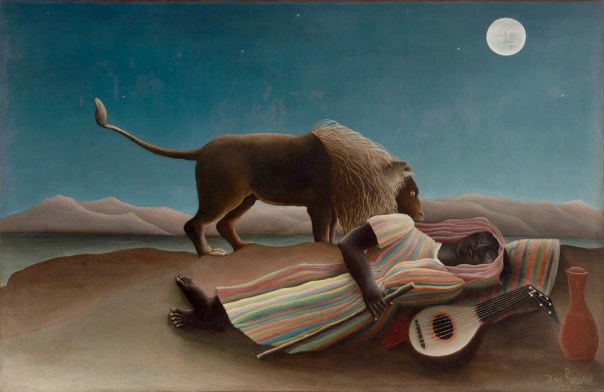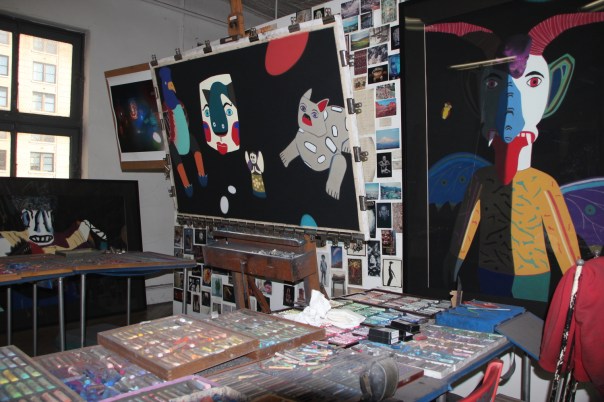Blog Archives
Q: Where did you grow up and what were some early milestones or experiences that contributed to you becoming an artist later in life?
Posted by barbararachkoscoloreddust
A: I grew up in a blue collar family in Clifton, New Jersey, a suburb about fifteen miles west of Manhattan. My father was a television repairman for RCA. My mother stayed home to raise my sister and me (at the time I had only one sister, Denise; my sister Michele was born much later). My parents were both first-generation Americans and no one in my extended family had gone to college yet. I was a smart kid who showed some artistic talent in kindergarten and earlier. I remember copying the Sunday comics, which in those days appeared in all the newspapers, and drawing small still lifes I arranged for myself. I have always been able to draw anything, as long as I can see it.
Denise, a cousin, and I enrolled in Saturday morning “art classes” at the studio of a painter named Frances Hulmes in Rutherford, NJ. I was about 6 years old. I continued the classes for 8 years and became a fairly adept oil painter. Since we lived so close to New York City, my mother often took us to museums, particularly to the Museum of Modern Art, the Metropolitan Museum of Art, and the Museum of Natural History. Like so many young girls, I fell in love with Rousseau’s “The Sleeping Gypsy” and was astonished by Picasso’s “Guernica” when it was on long-term loan to MoMA. I have fond memories of studying the dioramas at the Museum of Natural History (they are still my favorite part of the museum). As far as I know, there were no artists in my family so, unfortunately, I had no role models. At the age of 14 my father decided that art was not a serious pursuit – declaring, it is “a hobby, not a profession” – and abruptly stopped paying for my Saturday morning lessons. With no financial or moral support to pursue art, I turned my attention to other interests, letting my artistic abilities go dormant.
Comments are welcome!
Posted in 2019, An Artist's Life, Art in general, Painting in General
Comments Off on Q: Where did you grow up and what were some early milestones or experiences that contributed to you becoming an artist later in life?
Tags: "a hobby not a profession"paying, "Guernica", "Sleeping Gypsy", abilities, abruptly, Americans, anything, arranged, art classes, artist, artistic, artists, attention, blue collar, Clifton, college, contribute, copying, cousin, decided, dioramas, dormant, drawing, earlier, enrolled, experiences, extended family, family, father, first-generation, Frances Hulmes, Henri Rousseau, interests, kindergarten, Manhattan, memories, Metropolitan Museum of Art, milestones, morning, mother, museum, Museum of Modern Art, Museum of Natural History, myself, New Jersey, New York City, newspapers, oil on canvas, oil painter, painter, Picasso, pursuit, remember, role models, Rousseau, Rutherford, Saturday, serious, sister, still-lifes, stopped, studying, suburb, Sunday comics, talent, television repairman
Q: You have written about how you came to your current subject matter, but what led you away from photorealism to work that while not exactly abstract, leans more in that direction?
Posted by barbararachkoscoloreddust
A: Once I had achieved a high degree of technical facility with soft pastel, there was not much more to be gained from copying reality. Cameras do an excellent job of that so what would be the point?
Ultimately, all art lies in following an experience through to the end. Art is in the choices one makes. A visual artist’s private decisions about what to include and what to leave out become her unique inimitable style. Years ago I made a conscious decision to abandon photorealism. Since then I have been on a journey to work more from imagination and direct experience and less from physical reality.
It’s funny. I have always worked from photographs. Because I have a strong work ethic and substantial technical skill, I often feel like a slacker if I do not put in all the details that I see in the reference photo. That’s why the journey has been so slow, I think, as I convince myself it’s really ok to omit more and more details.
Comments are welcome!
Posted in 2015, An Artist's Life, Art in general, Art Works in Progress, Black Paintings, Creative Process, New York, NY, Pastel Painting, Photography, Studio, Working methods
Comments Off on Q: You have written about how you came to your current subject matter, but what led you away from photorealism to work that while not exactly abstract, leans more in that direction?
Tags: abandon, abstract, achieved, art, artist, away, came, cameras, choices, conscious, convince, copying, decision, degree, details, direct, direction, end, ethic, example, excellent, experience, facility, feel, following, funny, gained, imagination, include, inimitable, job, journey, leans, leave, led, lies, makes, matter, myself, omit, photographs, photorealism, physical, point, reality, reference, see, skill, slacker, slow, soft pastel, still, strong, Studio, subject, substantial, technical, through, ultimately, unique, visual, work, written


